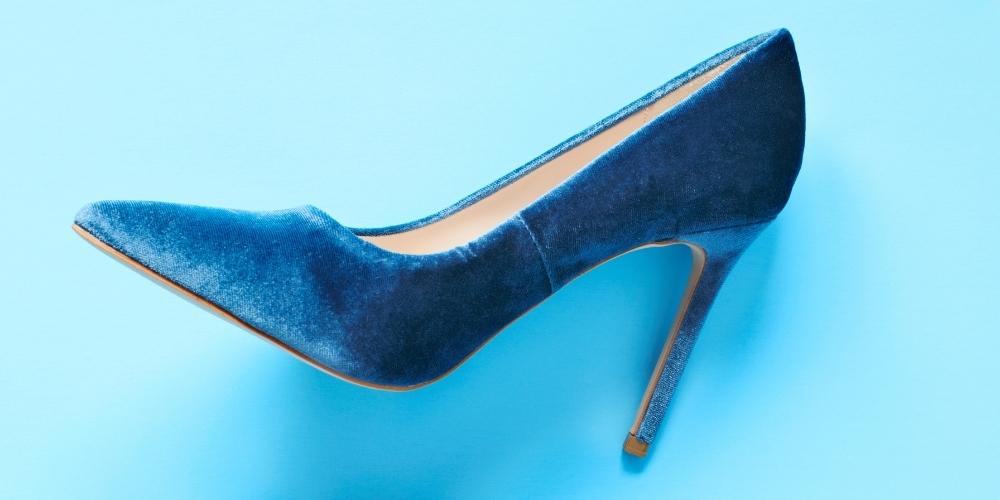
Velvet Shoes: An Overview of the Luxurious Material
Apr 07 , 2022
Tags - Velvet Shoes
What comes to mind when you think of velvet shoes?
Luxury? Elegance? Class?
All of these words accurately describe this timeless material.
Velvet has been around for centuries and is still a popular choice for shoes today.
In this blog, we will take a closer look at what velvet is, it's history and the different types available.
We will also talk about how velvet is used as one of the most stylish types of footwear.
What is Velvet?
Velvet is a type of fabric characterised by its smooth, soft, and glossy texture.
The term velvet refers to the way the fibres are structured, rather than the fibre itself.
However, velvet isn't created from a specific kind of fibre like other fabrics are. It has a very dense, plush pile of fibres that are evenly cut, resulting in a soft, smooth nap.
And it can be made from a variety of materials, including natural fibres such as silk, wool, and cotton, synthetic ones like rayon or polyester, or a mix of both; historically, it was created from silk.
Today, velvet fabric produced only from silk is exceedingly rare and costly.
Synthetic fibres are more commonly used to make velvet cloth in modern applications. This makes it a more practical and cost-effective use in a wide range of clothing.
When you look around, velvet is found in many applications throughout the textile industry, and it's ideal for any usage where softness is required, such as bedding and intimate wear.
In addition, its visual appeal and aesthetic quality make it perfect for fabrics that are on display, like drapes, furniture or shoes.
But, it can sometimes be more expensive than other fabrics, depending on the materials it’s made from.
The History of Velvet
Velvet is a luxurious fabric that has been used since ancient times by royalty, aristocracy, and the wealthy.
Although it was originally manufactured in Europe, its history extends far further back to China, Iraq, and Egypt's ancient civilisations.
Because silk was difficult to produce, it became the preferred fabric of royalty, who were the only ones able to afford it.
In Italy, the cloth was introduced in the days of the Silk Road trade route between Asia and Europe, when a vibrant velvet sector began to develop. Luxurious velvet curtains, furniture cushions, and apparel items were all produced in the years ahead.
In Europe, the era of the Renaissance was marked by a peak in velvet production, when it was both costly and time-consuming to make.
But, in the following centuries, the industrial revolution brought with it the capacity to produce any sort of cloth more quickly and simply on mechanical looms.
Despite this, velvet is still seen as a luxurious fabric that is fashionable today. Velvet trends have come and gone throughout the 20th century, yet its appeal has been constant for hundreds of years.
How is Velvet Made?
Velvet was produced by hand in ancient times, and because of the complicated procedure, it could only be made very slowly.
Today, velvet is most often produced in factories or knitting mills. Velvet is made from two layers of vertical yarn on a double cloth loom. This loom spins two pieces of cloth at the same time.
The two fabric layers are then separated and wound up into rolls for purchase by the customer - when velvet is woven into cloth, it may be dyed in many colours.
Types of Velvet
The most common types of velvet include:
- Crushed Velvet: when wet, crushed velvet is twisted or pressed to give it the "crushed" appearance.
- Plain Velvet: usually made from cotton, making it less shiny than other materials
- Embossed Velvet: where decorative designs are pressed onto it
- Pile-on-Pile Velvet: made of two or more piles of different heights to create patterns
- Stretch Velvet: combined with spandex to give it a stretchy quality
Velvet Shoes
In a broad sense, velvet slippers have been around forever – pretty much for as long as footwear and velvet have both existed.
The Pope's most famous footwear was velvet slippers; they are a distinctive crimson velvet and, of course, highly exclusive.
But when it comes to the general public, the history of velvet slippers starts more recently. By celebrity endorsement - in this case Prince Albert in the late 1800s - velvet slippers became a prominent style for the fashionable man.
At this point, slippers were already considered a useful item as a more comfortable and stylish indoor alternative to outdoor shoes; when roads were still gravel, tracking stones and dirt in from outside would ruin a nice floor, hence indoor slippers were used.
However, Prince Albert debuted a more formal aesthetic by adding velvet uppers and quilted linings to the basic design.
By the mid-1900s, Hollywood elites started to wear velvet slippers outdoors too, notably as a black-tie appropriate footwear, where they replaced formal patent leather loafers.
Once again, this lends celebrity influence and encourages the public to do the same. Nowadays, velvet shoes are commonly worn in formal situations, and like so many elements of mens formal wear, a window has opened up to wear the slipper in anything but the most casual of settings - all it takes is confidence and commitment!
For more information, get in touch with us today.
You may also like:
